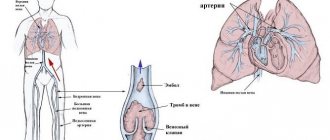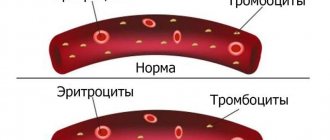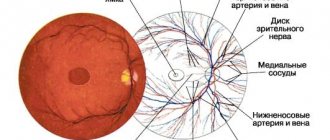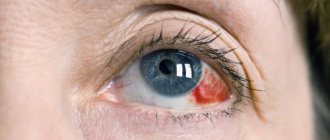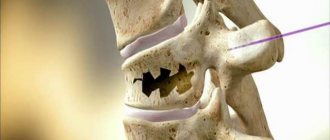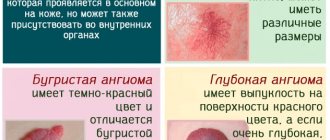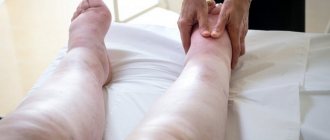© Author: Ilya Vitalievich Soldatenkov, general practitioner, especially for SosudInfo.ru (about the authors)
The fragility and fragility of blood vessels is due to the loss of elasticity of the vascular wall. In patients, blood vessels in the arms burst due to minor injuries or spontaneously. Clinically, this is manifested by the formation of hematomas (bruises), petechiae, and bruises. As a result of a traumatic injury to the upper limb, blood penetrates the skin and accumulates there.
In healthy people, the walls of blood vessels are strong and elastic, they are able to withstand short-term pressure. When a certain amount of force is applied, blood vessels in the arms burst and bruises appear. If hematomas occur for no reason, you should think about it and consult a specialist.
Bursted blood vessels in the hands indicate existing disorders in the body that require proper treatment. Patients complain that capillaries periodically appear on their fingers. After some time, they burst and a hematoma forms under the skin. Such phenomena are accompanied by severe pain and require seeking medical help from a phlebologist.
Older people are more likely to burst blood vessels in their hands than young people. This is due to the deposition of salts, lipids on the walls of blood vessels, and deterioration of blood supply due to cholesterol plaques. Blood vessels in older people wear out, become fragile and brittle.
Etiology
Vessels can burst in the hands for no apparent reason. To understand why this happens, it is necessary to examine the patient and analyze the results. The formation of bruises and hemorrhages is a pathological process caused by the influence of certain factors. If you do not pay attention to them, unpleasant consequences may develop.
The main reasons for the appearance of bruises on the arms include external and internal factors.
Endogenous (internal) etiological factors of pathology:
- Hormonal imbalance in a woman’s body during pregnancy, menopause, after abortion, as a result of long-term hormone therapy.
- Thyroid dysfunction, diabetes mellitus.
- Chronic kidney and liver diseases.
- Vegetative-vascular dystonia.
- the abundance of capillaries in the hand and regular stress on the hands are a reason for their frequent damage
Hemorrhagic syndrome, hemorrhagic diathesis in children (thrombocytopenic purpura).
- Hysteria, neuroses, emotional turmoil.
- Excess body weight.
- Hypertension.
- Acute violation of cerebral or coronary circulation.
- Systemic lupus erythematosus is manifested by prolonged inflammation of the vascular wall, leading to fragility of blood vessels.
- Allergies to certain medications, causing thinning of the capillary walls.
- Acute infections weaken the vascular walls, which leads to vessel fragility. This is observed in scarlet fever, measles, influenza, hemorrhagic vasculitis, and rheumatism.
- HIV infection.
- Oncopathology.
- Lack of vitamins C and P due to the lack of appropriate foods in the menu or impaired absorption of food.
- Age-related degeneration is characterized by loss of elasticity and thinning of all body tissues.
If a vessel on your finger bursts or spider veins appear on your forearm, you should not wait to continue. These phenomena are quite enough for a visit to a specialist.
Exogenous factors:
- Traumatic injury.
- Peeling, solarium and some other cosmetic procedures.
- Physical inactivity.
- Jumps in atmospheric air pressure and temperature changes.
- Burns or frostbite.
- Negative effects of direct sunlight.
- Long-term use of antidepressants, analgesics, anti-inflammatory or anti-asthmatic drugs.
- Stress and strong feelings.
- Physical overexertion and heavy strength training.
- Chemicals, low-quality household chemicals: detergents, liquid soap, shower gel, hand cream.
Why else can a blood vessel on your hand burst?
We should not exclude other causes that can lead to rupture of the vessel and, as a result, hematoma. Among them:
- sunbathing in the sun or in a solarium;
- peeling;
- injury;
- household chemicals;
- hypertension;
- high blood sugar.
If blood vessels under the skin burst frequently, you should consult a specialist. He will prescribe all the necessary studies, as well as hardware treatment of worn-out vessels. Let me emphasize once again: the most dangerous are invisible to the eye, internal ruptures of large vessels. Don’t wait for a serious problem, visit a therapist or phlebologist.
When burst blood vessels appear on the arms and legs, it can be assumed that serious disorders are occurring in the body. Most often, this phenomenon affects elderly people, who develop bruises when capillaries burst.
The pain in the arms and legs can be quite sharp and excruciating.
With such symptoms, treatment must begin as soon as possible after visiting a phlebologist and undergoing all necessary diagnostic procedures.
We will tell you what to do in case of this problem further...
Symptoms
The fragility and fragility of blood vessels is clinically manifested by the formation of subcutaneous hematomas, bruises or the appearance of nosebleeds.
In warm weather, patients with increased fragility of blood vessels experience cold and blue extremities. Spider veins appear on the skin caused by deformation of the capillary walls. Such patients do not tolerate heat well, suffer from frequent and causeless dizziness, darkening of the eyes upon sudden rise, and aching joints. They get motion sickness in transport, weather sensitivity develops, pressure surges are observed, tachycardia appears, and short-term fainting is possible.
Such symptoms indicate weakness and fragility of blood vessels, as well as existing circulatory disorders.
Diagnostics
To determine the patient's increased fragility of blood vessels and find out the cause of this pathology, several diagnostic tests are performed.
- Pinch method: gather a fold of skin under the collarbone with your fingers and painlessly squeeze it, turning it 90 degrees. Normally, a hemorrhagic spot does not form. If bruising occurs at the site of the pinch, fragility of the blood vessels occurs.
an example of the use of the tourniquet method in identifying hemorrhagic diathesisTourniquet method: a blood pressure cuff or rubber tourniquet is applied to the middle third of the shoulder and left for five minutes. After removing the tourniquet, this area is examined. If isolated pinpoint hemorrhages or large hematomas appear on it, the fragility of the vessels is considered significant and requires adequate therapy.
- Percussion hammer method: the chest is painlessly tapped with a hammer and the presence of bruises is checked.
For people with increased fragility of blood vessels, therapists recommend consulting with specialized specialists, donating urine and blood for a general clinical analysis, blood for a coagulogram, and undergoing electrocardiography and capillaroscopy.
Capillaroscopy is a non-invasive method for studying soft tissue capillaries, which allows one to determine the state of microcirculation in a person. Using a stereomicroscope, you can examine each specific capillary individually or the entire capillary network in a given area. When the vascular walls are damaged and the integrity of the capillaries is disrupted, red blood cells enter the interstitial space. When several small pinpoint hemorrhages merge, large foci are formed. Another microscopic sign of increased vascular fragility is a change in the shape of the capillary loop.
Prevention
To prevent vascular fragility, the following must be observed:
- Control of water balance in the body. A sick person should drink at least 2 liters of fluid per day. It is water that helps reduce congestion in the capillaries and disperse blood through them.
- Physical exercise. Regular exercise on the body helps reduce the risk of thrombosis and eliminates bruises. Good sports are cycling and going to the swimming pool. You can go to the gym, but it’s better to exercise on horizontal bars in the fresh air.
- Hardening the body. An excellent way is water procedures, which perfectly strengthen the vascular walls. A contrast shower or dousing in the fresh air is good for this.
- Monitor blood pressure on a regular basis. To do this, you should purchase a tonometer and measure your pressure 2 times a day.
- Massage. You can do it with an experienced specialist or on your own.
- Rejection of bad habits. It is necessary to eliminate alcohol and smoking from your life.
- Proper and balanced nutrition. The diet should include plenty of fresh vegetables and fruits, nuts, cereals, cheese, eggs and dairy products. Avoid fatty and fried foods, as well as salty foods.
- Be regularly examined by a phlebologist (at least once a year).
If you regularly burst blood vessels on your arms and legs, you should visit a specialist for a thorough examination.
If the doctor identifies serious problems in the patient’s health, he will prescribe treatment depending on the cause.
To maintain blood vessels, you should follow simple preventive recommendations.
Treatment
The main reason for the appearance of burst blood vessels on the hands is the fragility and fragility of the vascular walls. Treatment of this problem begins with strengthening the blood vessels after a comprehensive examination by specialists in related specialties.
The diet of people who have burst blood vessels in their hands should consist of foods enriched with vitamins and angioprotective substances. Patients are recommended to include chicken or rabbit meat, veal, beef, low-fat fish, vegetables and fruits, cereals and pasta, nuts, beans, and lactic acid products in their daily menu. They are prohibited from fried foods, baked goods, smoked meats and marinades, and spices. Salty and sweet foods should be consumed in limited quantities. Coffee, carbonated and alcoholic drinks are strictly prohibited.
- If a vessel bursts due to injury, this is not a reason to take emergency measures. A small hematoma will go away on its own.
- Exposure to chemicals leads to rapid aging of the skin of the hands and damage to the capillaries on the hands. To prevent this from happening, you must use protective gloves.
- To strengthen blood vessels, it is useful to do exercises that activate the venous system, perform massages that improve blood circulation, harden the body, and quit smoking.
Drug therapy
- If the cause of increased vascular fragility is atherosclerosis, patients are prescribed Atorvastatin, Lovastatin, Fenofibrate.
- For hypovitaminosis, diet therapy and taking vitamin-mineral complexes - "Ascorutin", "Rutoside", "Capilar", multivitamins - "Vitrum", "Complivit" - are indicated. It is recommended to eat foods containing ascorbic acid: citrus fruits, black currants, chokeberries, apricots, raspberries, cherries, parsley, tomatoes, rose hips.
- To relieve swelling and reduce inflammation, patients are prescribed Troxevasin. This drug strengthens the walls of blood vessels, increases their tone and prevents thrombus formation. The gel of local, local action will strengthen the blood vessels and prevent their damage in the future. For capillary fragility, other phlebotonics are also indicated - Phlebodia, Detralex.
- Angioprotective agents and venotonics improve the condition of patients - “Eskuzan”, “Aescin”.
- Antihistamines - Suprastin, Cetrin, Zirtec, Zodak - will help prevent further damage to the vascular walls after contact with the allergen.
- A burst vessel in the arm may be associated with fluctuations in blood pressure and may be a harbinger of a stroke. It is necessary to monitor blood pressure levels daily and, if necessary, take antihypertensive drugs - Enalapril, Capoten, Lorista.
Among the instrumental treatment methods, the most effective are: microsclerotherapy, laser therapy, intense pulsed light treatment , photocoagulation. In severe cases, specialists resort to surgical removal of burst vessels.
ethnoscience
Traditional medicine methods are quite popular among the population. They are considered time-tested and do not require special financial costs.
The most effective remedies based on medicinal herbs:
- Infusion of walnut leaves or water pepper.
- Blackcurrant decoction has a strengthening effect on capillaries and prevents the fragility of blood vessels.
- Lemon juice strengthens the walls of blood vessels, restoring their elasticity. It is recommended to drink 2 glasses of warm water daily with the addition of lemon juice and honey.
- Garlic-lemon tincture cleanses and strengthens blood vessels throughout the body.
- Tea with rose hips strengthens the walls of blood vessels and heart cells. Rose hips are brewed with pine needles, cranberries, lemon, and honey.
- Rowan strengthens blood vessels well. It is harvested in the fall and the fruits are eaten daily for six months.
- Patients are recommended to eat 2 cloves of garlic every day.
Turpentine baths are an effective folk remedy that strengthens blood vessels. After taking such a bath, the capillaries open, and blood circulation in the body improves.
If blood vessels in your hands constantly burst, this is an alarming symptom that should not be ignored. When hematomas, petechiae and hemorrhages appear, attention should be paid to the state of the circulatory system as a whole. Fragility of blood vessels is just a symptom of pathology. If left untreated, the blood vessels will continue to burst. This may result in radical procedures such as surgery.
How to strengthen blood vessels
Training and more training! Light sports, swimming, walks in the fresh air pump blood, strengthen the heart and the entire circulatory system. Lack of movement is the enemy of our blood vessels! You should not allow stagnation in the veins.
I remembered the funny exercise “The bug turned over”, which I recommend starting the day with. Lying in bed on your back, raise your arms and legs up and shake them like the legs of an insect for about 10 minutes. Scientifically, this is called the “vibration technique.” Very useful for blood circulation.
To strengthen and improve the elasticity of the walls of blood vessels, therapists usually prescribe vitamins PP, C, B and E. This includes for prevention. At the age of 40, it’s time to drink vitamins that are beneficial for blood vessels.
Do a massage - it also strengthens blood vessels. If you can’t go to a professional massage therapist, do this procedure for your hands and feet yourself. Or ask one of your relatives. There are many videos on the Internet about massage techniques.

